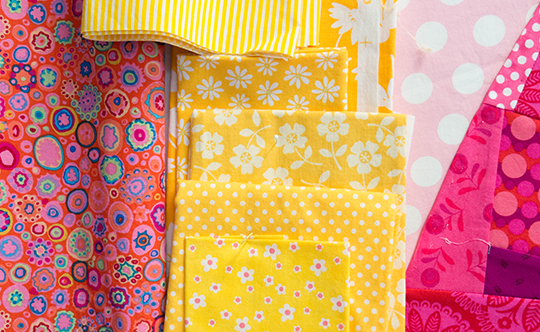Try Something Different with Becky Goldsmith!
Posted by Becky Goldsmith on Oct 7th 2016
I’m making a quilt that I will be machine appliquéing and using products that I never use in my hand appliqué. It’s hard to let go of the bias I have against freezer paper and glue, but I am trying, and learning, a lot along the way.
Freezer Paper Templates
The appliqué shapes are big (really big) and are only used once. Freezer paper is especially suited for big shapes because it doesn’t slip out of place when it is ironed to the fabric. I bought a big roll of freezer paper and traced my templates.
I am using the templates on the right side of the fabric and turning the edges of the appliqué under along the cut edge of the freezer paper. I am not tracing around the freezer paper onto the fabric because I don’t want to worry about the lines.
What I learned: Freezer paper gets in the way when auditioning fabric on my design wall, and I don’t love the tracing, but the templates did work and are the best choice for this quilt.
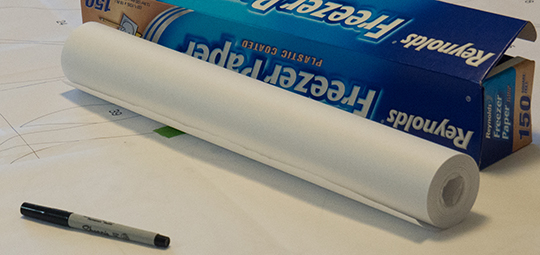
Gluing Fabric
Even soft fusible web feels stiff to me, and raw edge appliqué does not suit this design. That means that I need to turn and baste, or glue, the edges of the appliqué under before I can machine sew the appliqué in place. Basting is slow, and my appliqué shapes don’t lend themselves to basting so I’m using glue. What I know now is that there is not a perfect glue—you have to find a glue that works for you.
Elmer’s Washable School Glue
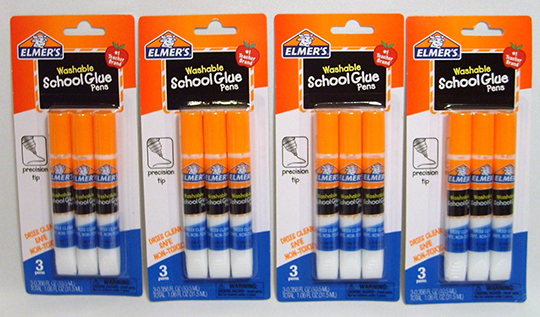
I started with Elmer’s Washable School Glue with a precision tip and eliminated it pretty quickly. It’s too sticky for me, and I made a mess with it. It is also kind of hard when it dries.
At this point I got to wondering: what exactly is in Elmer’s Glue? It’s washable, but that doesn’t tell me anything. So I Googled it—which I should have done in the first place—and here’s what I found:
Elmer's Glues are chemical based. They are made or formulated from chemicals which are synthesized (created by Man). These chemicals were originally obtained or manufactured from petroleum, natural gas and other raw materials found in Nature. The exact formula and specific ingredients used in making Elmer's products are considered proprietary information, therefore, we cannot share those with you.
After more reading I’m pretty sure that Elmer’s School Glue is an acrylic polymer, and I don’t think it is acid-free.
While it may work well for some people, I don’t like Elmer’s Glue enough to use it.
Rice Glue
I have a dim memory that Roxanne’s Glue-Baste-It is made from rice, but I could not find confirmation of that online, so instead I bought rice-paste powder and little plastic bottles with fine applicator tips.
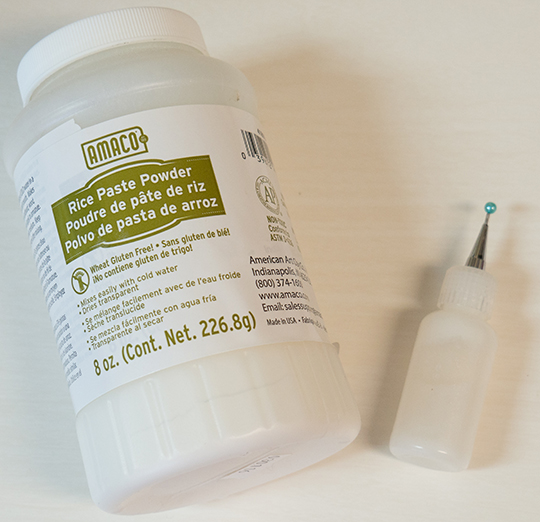
I mixed ¼-cup of water with 3 teaspoons of rice powder and made a glue that works pretty well. (I might add a little more rice powder next time to make it thicker.) It works! I did use my iron to set the shapes once glued, especially when the rice glue was still damp. I don’t have one of those little tiny Quilter’s Irons, but it might be a helpful tool.
The rice glue dries to a crisp finish. In fact, the edges of my appliqué shapes are almost hard, which is fine for machine sewing, but it would be hard to hand sew. Maybe I used too much glue?
I like my homemade rice glue better than Elmer’s Glue, but it’s not as sticky, so you have to work with the edges a little more to get them to stick down.
Blue Glue Pen
I have used the blue Sewline Glue Pen (which is acid-free and washable) in English paper piecing and liked it, so I gave it a try. This glue goes on smooth, it’s easy to control, works fast, and is more flexible when it dries. The blue fades, often within minutes. However, after 24 hours, I realized that the blue color was still visible through my white fabric. Oh no!
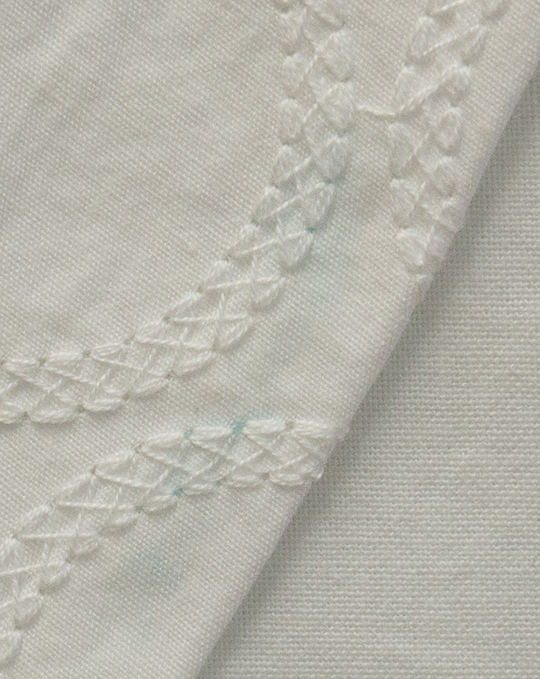
This is the first time I’ve had a problem with the blue glue pen. The color did fade after another 24 hours, but it made me nervous, so I decided to try yet another glue, the Quilter’s Select yellow glue pen. This glue is a fluorescent yellow, and it works just as well as the blue glue, but it’s lighter in color. NOTE: Sewline also offers a yellow glue, and I think it is basically the same glue.
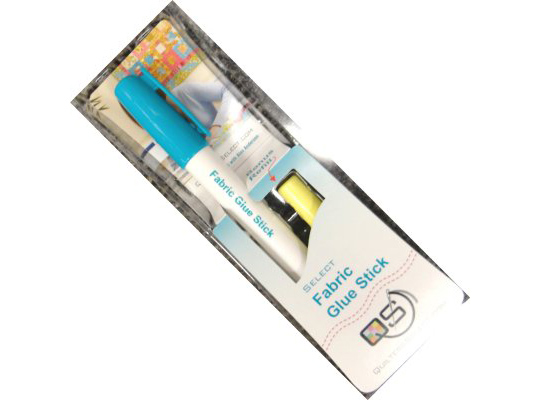
What I learned: I don’t like glueing the edges of my appliqué, but when I have to use glue, I’ll use the yellow glue pen.
I can’t show you the quilt (yet), but trust me when I tell you that you are going to love it. It’s happy and colorful!
